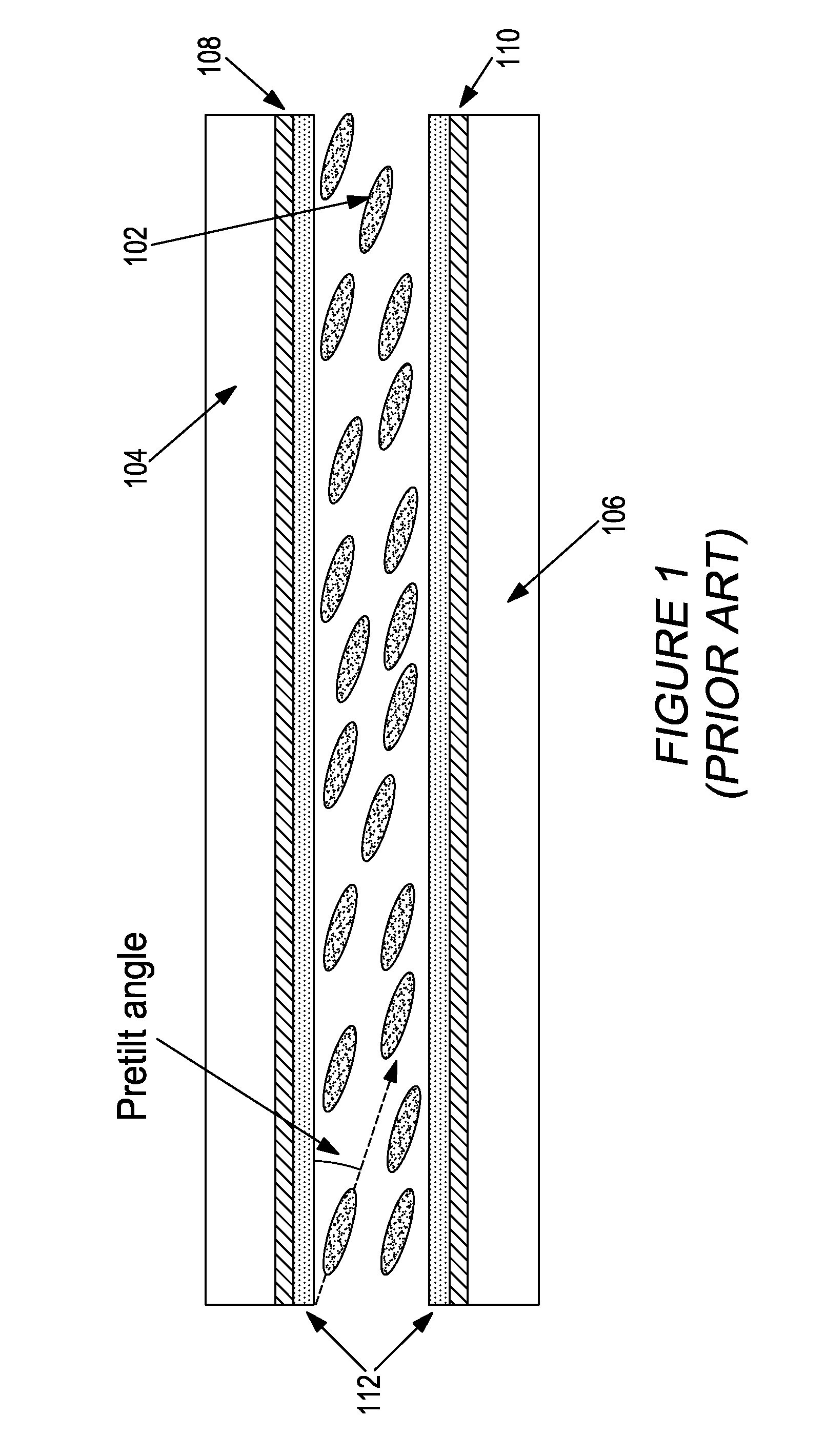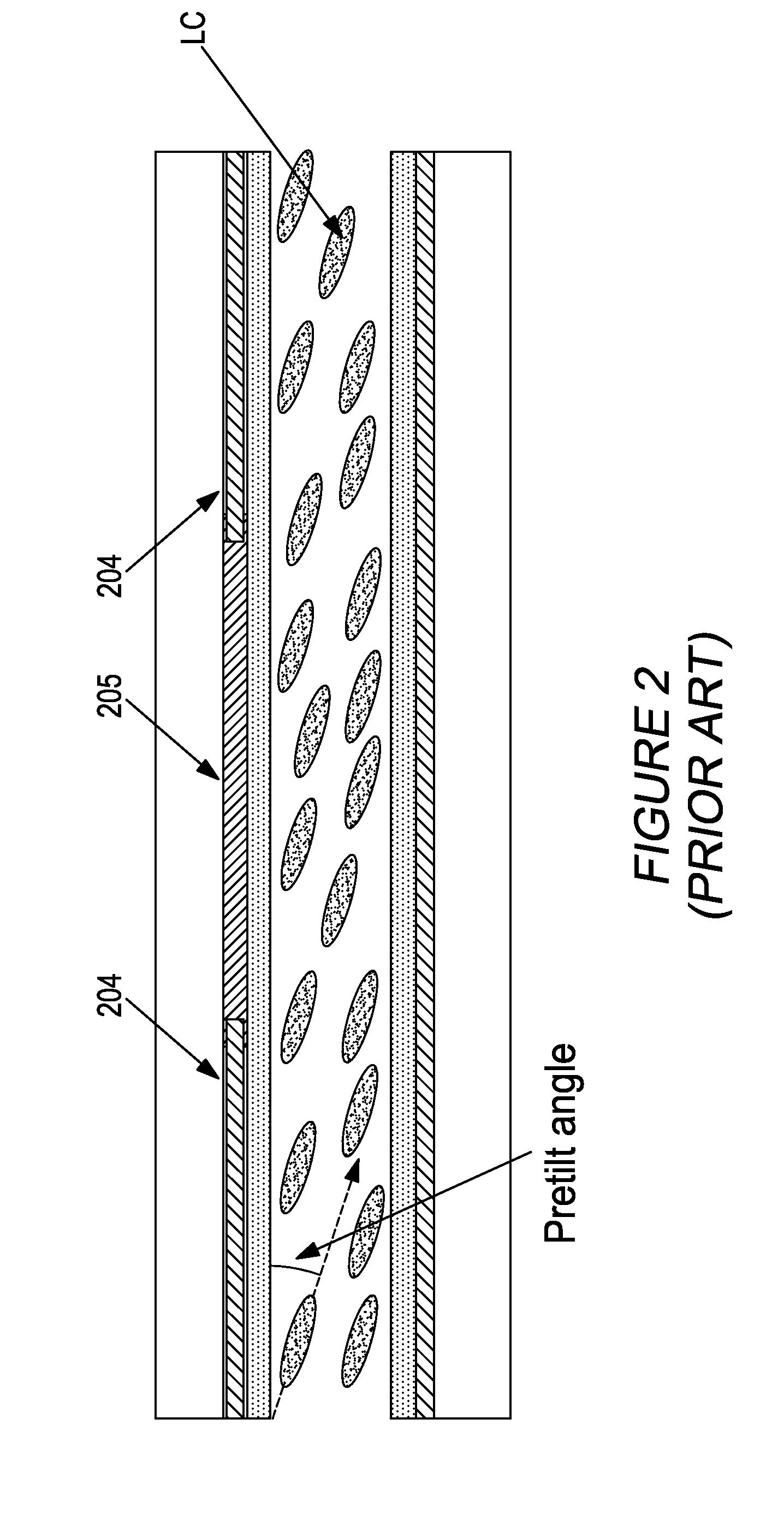Electro-optical devices using dynamic reconfiguration of effective electrode structures
a technology of effective electrode structure and electro-optical device, which is applied in the direction of static indicating device, door/window protective device, instruments, etc., can solve the problems of difficult to produce the required thickness of high resistivity material with high optical transparency, low yield of manufacturing process, and inability to switch between diverging and converging lenses, so as to reduce image aberration, improve lens performance, avoid disclination of lc layer
- Summary
- Abstract
- Description
- Claims
- Application Information
AI Technical Summary
Benefits of technology
Problems solved by technology
Method used
Image
Examples
Embodiment Construction
en using a drive signal having a relatively high frequency.
[0065]FIG. 27C is a graphical view showing equipotential planes for the configuration of FIG. 27A when using a drive signal having a relatively low frequency.
[0066]FIG. 28A is a schematic view of a structure similar to that of FIG. 27A but with a shaped top electrode having an inverted shape to provide an opposite tunability.
[0067]FIG. 28B is a schematic view of a structure having a top electrode with a shape having all flat surfaces, and a flat aperture polymer structure.
[0068]FIG. 28C is a schematic view of a structure similar to that of FIG. 28B, but for which the positions of the flat surfaces are reversed so as to provide an opposite tunability.
[0069]FIG. 29A is a schematic view of a structure having a top electrode with a curved layer of frequency dependent material encased in a top layer of polymer material.
[0070]FIG. 29B is a graphical view showing the maximum angle of reorientation of LC molecules for the lens confi...
PUM
| Property | Measurement | Unit |
|---|---|---|
| dielectric constant | aaaaa | aaaaa |
| dielectric constant | aaaaa | aaaaa |
| voltages | aaaaa | aaaaa |
Abstract
Description
Claims
Application Information
 Login to View More
Login to View More - R&D
- Intellectual Property
- Life Sciences
- Materials
- Tech Scout
- Unparalleled Data Quality
- Higher Quality Content
- 60% Fewer Hallucinations
Browse by: Latest US Patents, China's latest patents, Technical Efficacy Thesaurus, Application Domain, Technology Topic, Popular Technical Reports.
© 2025 PatSnap. All rights reserved.Legal|Privacy policy|Modern Slavery Act Transparency Statement|Sitemap|About US| Contact US: help@patsnap.com



